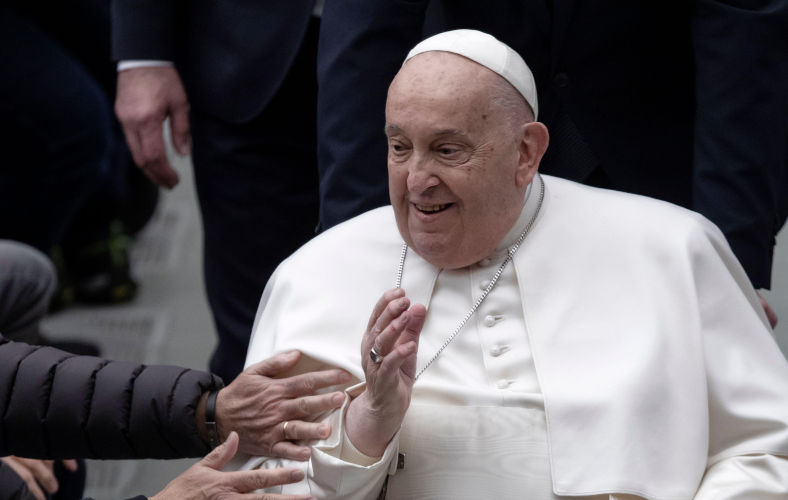Explainer | What happens after Pope Francis’ death?
April 23, 2025
Following Pope Francis’ death, key rituals commence, including sealing his flat, destroying the ring, and funeral arrangements.
With the death of Pope Francis, announced by the Vatican on Monday, the Roman Catholic Church will begin elaborate rituals steeped in tradition that mark the end of one papacy and lead to the start of the next.
Most are governed by a constitution known as Universi Dominici Gregis (Of the Lord’s Whole Flock) approved by Pope John Paul II in 1996 and revised by Pope Benedict XVI in 2007 and 2013.
A cardinal known as the camerlengo (chamberlain), currently Irish-American Cardinal Kevin Farrell, will run the ordinary affairs of the nearly 1.4 billion-member Roman Catholic Church during the period known as the “sede vacante” (empty chair).
He officially confirms the pope’s death, a simple matter these days involving a doctor and a death certificate. Until sometime in the 20th century, this was ritually done by tapping a silver hammer on the pope’s forehead three times.
The camerlengo and three assistants chosen from among cardinals under 80, known as cardinal electors, decide when the pope’s body is to be taken into St Peter’s Basilica for the public to pay their respects.
They also make sure the pope’s “Fisherman’s Ring” and his lead seal are broken so they cannot be used by anyone else. No autopsy is performed.
The camerlengo locks and seals the pope’s personal residence. In the past, this was in flats in the Apostolic Palace, but Francis lived in a small suite in the Vatican guest house known as Santa Marta.
The camerlengo and the other cardinals cannot make major decisions affecting the church or change its teachings. The heads of most Vatican departments resign until the new pope confirms or replaces them.
Mourning rites last nine days, with the date of the funeral and burial to be decided by the cardinals. Universi Dominici Gregis says they should start between the fourth and sixth day after his death.
Since the 2005 conclave that elected Pope Benedict, they have voted in the Sistine Chapel, but stayed in the Santa Marta guesthouse, with about 130 rooms. Santa Marta is sealed off, and they are taken by bus to the Sistine Chapel.
The word conclave comes from the Latin for “with a key”. It stems from a tradition that started in the 13th century, when cardinals were locked up to force them to decide as quickly as possible and to limit outside interference.
These days, the participants are prohibited from any communication with the outside world. Phones, internet, and newspapers are not allowed and Vatican police use electronic security apparatus to enforce the rules.
Except for the first day of the conclave, when there is one vote, the cardinals vote twice a day.
A majority of two-thirds plus one is needed for election. If no one is elected after 13 days, a run-off is held between the two leading candidates, but a two-thirds plus one majority is still needed. This is to promote unity and discourage seeking compromise candidates.
‘Habemus Papam’
When the conclave has elected a pope, he is asked if he accepts and which name he wishes to take. If he declines, the procedure starts again.
The new pope dons white vestments that have been prepared in three sizes and sits on a throne in the Sistine Chapel to receive the other cardinals, who pay homage and pledge obedience.
The world will know that a pope has been elected when an official burns the paper ballots with special chemicals to make white smoke pour out of the chapel’s chimney. Black smoke indicates an inconclusive vote.
The senior elector among the cardinal deacons, currently French Cardinal Dominique Mamberti, steps on to the central balcony of St Peter’s Basilica to announce to the crowds in the square “Habemus Papam” (We have a Pope).
The new pope then appears and gives the crowd his first blessing as pontiff.
Republished from South China Morning Post, 21 April
